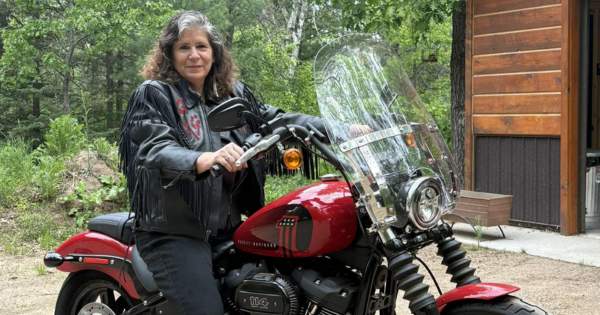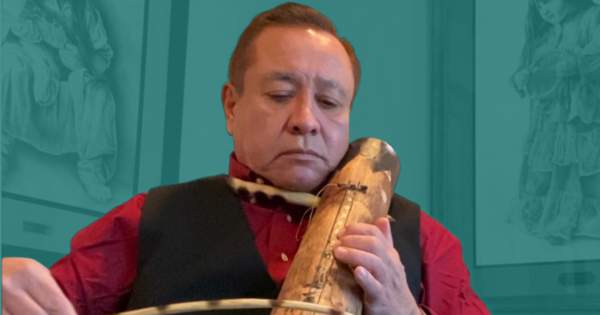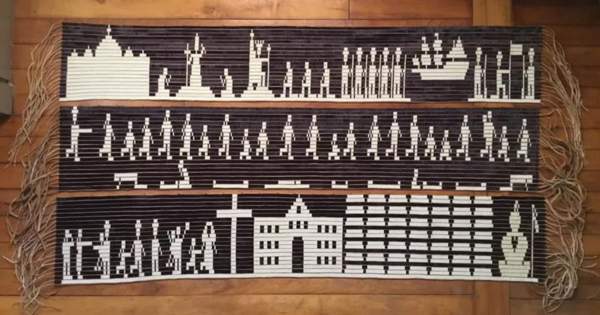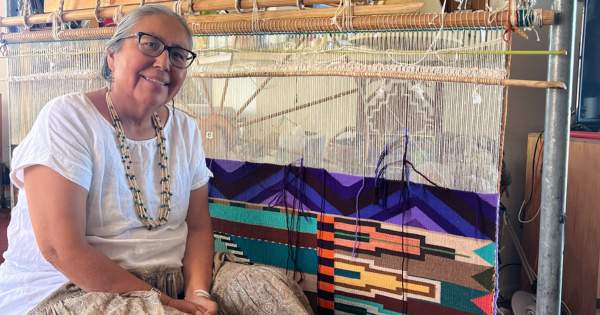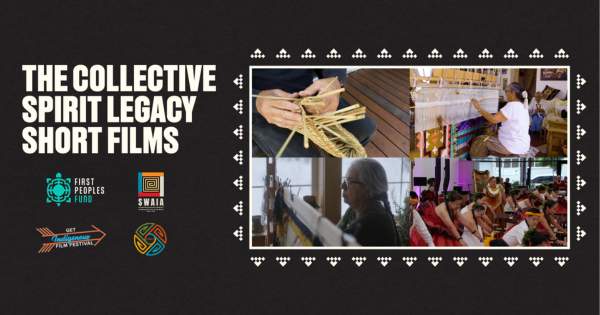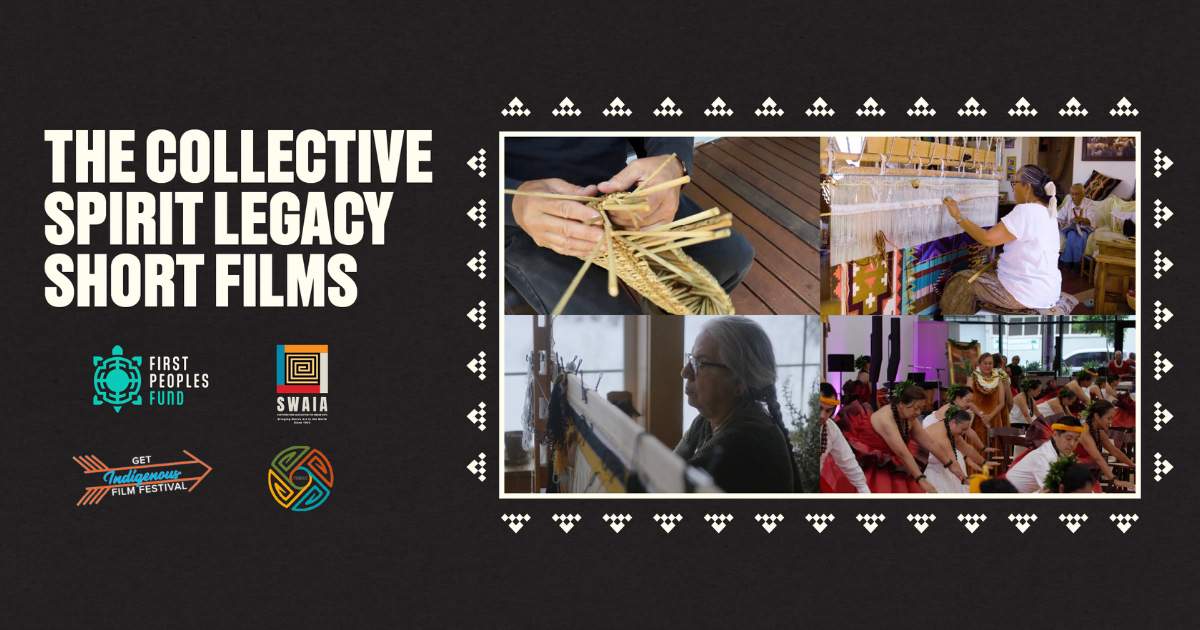
A Continuum of Native Women Changemakers
As we celebrate and close out Women’s History Month, we also observe the anniversary of the COVID-19 pandemic and acknowledge its impact on Indigenous, Black, Asian, immigrant and Trans women.
Despite the year’s challenges, we have seen transformative successes to celebrate such as Madame Secretary Deb Haaland’s (Laguna Pueblo) appointment to serve as Secretary of the Interior in the Biden-Harris Administration.
In the spirit of Women’s History Month, a Q&A with First Peoples Fund’s Founding President Lori Lea Pourier (Oglala Lakota) recognizes the continuum of Native changemakers who have inspired her and led us to this moment. She shares with us what gives her hope.
FPF: Who are some of the women who inspired you early in your career?
LLP: I’m a product of all those women from my mother’s generation. My early work with the First Nations Development Institute (FNDI) was under the leadership of Sherry Salway Black (Oglala Lakota) and Rebecca Adamson (Eastern Band of Cherokee) and they shaped much of my approach to community economic development going forward. Rebecca had worked with my mother, Marilyn Pourier (Oglala Lakota), during the American Indian Controlled Schools movement in the 70s. By the early 1990s, I was invited by the founders of the Indigenous Women’s Network [IWN] to help build the programs of the IWN including the first-ever emerging women’s activist leadership program. It was during a time when we began to see that the majority of the nonprofits in Indian Country were led by women. The women of FNDI and IWN recognized that it was up to us to solve our own problems by working outside the federal systems to make change, and to create alternative development strategies.
In 1998, I joined First Peoples Fund, and the work focused solely on artists and tradition keepers of tribal communities. Much of this work was also led by women and we began to honor and support women who founded the weavers’ movements such as the California Basketweavers Alliance, Maine Indian Basketmakers Alliance and Northwest Native American Basketweavers Association. These are membership organizations that each started with a handful of people supporting each other as cultural practitioners and business people. They started small and rapidly grew. Women are integral to the leadership of these organizations, and today a huge portion of the members are women, yet you see all generations and all members of the family involved in the work.
Recently, I was listening to the 50th anniversary celebration of the Oglala Lakota College. This college on the Pine Ridge Reservation, where I grew up, is the second tribal college in the nation. My mother has served as the Director of Development there since 1997. When you talk about significant shifts in Indian Country, you have to start with the Indian controlled schools and tribal college movements. In that generation there were those who worked within the system and those who worked to change it. A handful of them were Native educators who attended Indian boarding schools, went on to higher education and returned home to become the agents for change in our education systems. LaDonna Harris (Comanche) was another leader of that generation. After marrying Senator Fred Harris she went to Washington, D.C. to work on so many initiatives on a national level and later established Americans for Indian Opportunity. LaDonna and her daughter Laura Harris founded the American Indian Ambassadors program of which I am a member of the first cohort. There’s a documentary about LaDonna called Indian 101 and we just honored her 90th birthday!
Reflecting on my earlier years and thinking about today, it’s important to make those connections and always remember those who came before you. That is what I value about my work at First Peoples Fund. We are intentional about honoring those who came before us. We have to ground ourselves in their teachings, learn their stories and their history and make sure that we are mindful of sharing with the next generation.
FPF: Who are some of the other Native women who have led us to this moment?
LLP: I met Winona LaDuke (White Earth) when she started the White Earth Land Recovery Project. She invited me to work with them on their marketing strategy for the wild rice and maple syrup enterprise. Winona continues to work as hard as she did when I met her 30 years ago. She continues the work on the front lines to protect our natural resources with the most current being to stop Line 3 at the headwaters of the Mississippi.
Today, Indigenous women are moving into political positions. This started about 20 years ago when women began serving in tribal government. Cecilia Fire Thunder (Oglala Lakota), who's my huŋká (mother) through ceremony, is one of the women who was on the front end of of tribal women leaders. She was the first woman president of the Oglala Sioux Tribe. She co-founded the Native Women's Society of the Great Plains and is a long time member of the Women Empowering Women of Indigenous Nations (WEWIN). She continues to lift up women. A group of the WEWIN women gathered recently to celebrate Madame Secretary Deb Haaland as the first Indigenous woman in history to be appointed to a Cabinet level post as U.S. Secretary of the Interior. And now Colleen Echohawk (Pawnee/Upper Athabascan) is running for mayor of Seattle.
FPF: How do you see the impact of Indigenous women’s leadership playing out today?
LLP: The liberation movements — Black Lives Matter, Standing Rock, and others — have given us strength for Native peoples to stand strong, tell our stories and our truth. We continue to hold that resilience and rootedness. This is the Collective Spirit® that First Peoples Fund practices, that which moves each one of us to stand up and make a difference in our communities or simply extend a hand of generosity to others in the community. We continue to lift up the artists and tradition bearers and strengthen these networks that are important to sustaining culture at the community level.
FPF: What are some of the changes that are most notable to you today?
LLP: What is different from my generation is today more young women are leaders of their Tribal Nations, their tribal courts and tribal colleges and some are building alternative models or nonprofit structures. They are holding positions that were primarily dominated by men. They're now influencing policy and changing the cultural fabric of our tribal communities. Because when women lead, it's different.
Jodi Archambault (Standing Rock), who's from my generation was on the forefront of this work. She became the first Native woman to join President Obama’s administration as the Deputy Associate Director of Intergovernmental Affairs and Associate Director of Public Engagement. And I remember her first month. I was at the White House for a national arts meeting and she joined our meeting. We visited about her role that included working with the 574 Tribal Nations. I was so proud of my Lakota maške (sister).
FPF: What other ways do you see young Native women leading today?
LLP: I see young, Indigenous women filling important leadership roles and building their own spaces, like when I was younger. There are two young Oglala women from home now serving in the South Dakota legislature, Peri Pourier in the House of Representatives and Red Dawn Foster in the Senate. Both are Democrats and have served two terms. There is also a very inspiring group of young language warriors. My Lakota language teacher is Sierra Concha and daughter of my maške, Tashina Banks Rama (Oglala Lakota), Executive Vice President of the Red Cloud Indian School. This younger generation is immersed in our culture, the language and ceremonies. They are embracing our culture in many ways through the language and Lakota ceremonies as are their children. I am so inspired and humbled by them. It is incredible to learn from them.
FPF: How are Indigenous women artists and culture bearers contributing to change?
LLP: They do it through their selfless work in fostering Collective Spirit® within their communities. Some of our Community Spirit honorees — Delores Churchill (Haida), Lani Hotch (Tlingit), Lynette Two Bulls (Oglala Lakota) — are quietly transforming their communities. I am also inspired by women like Donna Tinnin (Cherokee Nation) who I first met through our CDFI (Community Development Financial Institution) work in Indian Country.
At Cherokee Nation Businesses, she’s quietly leading the community economic development programs supporting artists and culture bearers including the Cherokee Arts Center. First Peoples Fund has worked alongside Donna and her community of artists and culture bearers for some time now.
First Peoples Fund supports these women, builds relationships and makes new relatives in our work on a national level. This work will continue long after me.
It’s now been more than 4,000 artists that we’ve worked with within tribal communities, including providing 425 fellowships. More than 60% of the artists who come to our trainings are women. But no matter who I get on the phone with, it’s the same messaging and driving passion: Building and teaching ancestral knowledge. You can hear it in their belief and desire to want something different, especially the younger generation.
There are so many young people with a desire to create and make art, whether it's visual art or traditional art forms such as making their first-ever basket or even building a canoe. Finding these ways of expression give us life and foster connection and relationships to our relatives and the land. Our grandparents worked with their hands and on the land. It is how Indigenous Peoples lead.
What if all peoples could lead in this manner, from that place of deeply rooted knowledge and beauty, from that place of love in all life?
That gives me hope.
